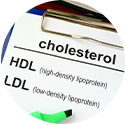ADHD research June 1, 2015
Pesticides and ADHD
A new study links a commonly used household pesticide with attention deficit hyperactivity disorder (ADHD) in children and young teens.
The study found an association between pyrethroid pesticide exposure and ADHD, particularly in terms of hyperactivity and impulsivity, rather than inattentiveness. The association was stronger in boys than in girls.
The study, led by researchers at Cincinnati Children’s Hospital Medical Center, is published online in the journal Environmental Health. June 1, 2015
“Given the growing use of pyrethroid pesticides and the perception that they may represent a safe alternative, our findings may be of considerable public health importance,” says Tanya Froehlich, MD, a developmental pediatrician at Cincinnati Children’s and the study’s corresponding author.
Due to concerns about adverse health consequences, the United States Environmental Protection Agency banned the two most commonly used organophosphate (organic compounds containing phosphorus) pesticides from residential use in 2000-2001. The ban led to the increased use of pyrethroid pesticides, which are now the most commonly used pesticides for residential pest control and public health purposes. They also are used increasingly in agriculture.
Pyrethroids have often been considered a safer choice because they are not as acutely toxic as the banned organophosphates. Animal studies, on the other hand, suggested a heightened vulnerability to the effects of pyrethroid exposure on hyperactivity, impulsivity and abnormalities in the dopamine system in male mice. Dopamine is a neurochemical in the brain thought to be involved in many activities, including those that govern ADHD.
Researchers at Rutgers University in New Jersey reported similar links between pesticide exposure and ADHD.
The researchers say that a commonly used pesticide may alter the development of the brain’s dopamine system — responsible for emotional expression and cognitive function – and increase the risk of attention deficit hyperactivity disorder in children
The research published Wednesday in the Journal of the Federation of American Societies for Experimental Biology (FASEB), by Rutgers scientists and colleagues from Emory University, the University of Rochester Medical Center, and Wake Forest University discovered that mice exposed to the pyrethroid pesticide deltamethrin in utero and through lactation exhibited several features of ADHD, including dysfunctional dopamine signaling in the brain, hyperactivity, working memory, attention deficits and impulsive-like behavior.
These findings provide strong evidence, using data from animal models and humans, that exposure to pyrethroid pesticides, including deltamethrin, may be a risk factor for ADHD, says lead author Jason Richardson, associate professor in the Department and Environmental and Occupational Medicine at Rutgers Robert Wood Johnson Medical School and a member of the Environmental and Occupational Health Sciences Institute (EOHSI).
“Although we can’t change genetic susceptibility to ADHD, there may be modifiable environmental factors, including exposures to pesticides that we should be examining in more detail,” says Richardson.
Importantly, in this study, the male mice were affected more than the female mice, similar to what is observed in children with ADHD. The ADHD-like behaviors persisted in the mice through adulthood, even though the pesticide, considered to be less toxic and used on golf courses, in the home, and on gardens, lawns and vegetable crops, was no longer detected in their system.
Researchers warn of over-medicating ADHD Children
About one quarter of commercially-insured children who are treated with medication for attention-deficit/hyperactivity disorder also receive psychotherapy, and the percentage is far lower in many parts of the country, according to a recent RAND Corporation study.
Published as a research letter in the Sept. 22 edition of JAMA Pediatrics, the study is the first to document the substantial variation in receipt of talk therapy among U.S. children treated with ADHD medication, varying more than six-fold across counties in the United States.
For many children with attention-deficit/hyperactivity disorder, medication alone can manage symptoms. But evidence shows that some affected children do better and can take lower doses of stimulant medications when they receive behavioral therapy along with ADHD drugs.
Overuse and abuse of stimulant medications
“Treatment of ADHD in children generates lots of controversy, primarily because of potential for overuse and abuse of stimulant medications,” said Dr. Walid F. Gellad, the study’s lead author and an adjunct scientist at RAND, a nonprofit research organization. “We wanted to find out among those who receive ADHD medications, how many also receive billed psychotherapy services? The answer is few, but it actually depends on where you live.”
Using a large commercial claims database, researchers examined records of more than 300,000 children aged 17 and younger from 1,516 counties across the United States who had received a prescription for medication for ADHD. Sparsely populated counties were not included in the study.
The researchers looked at how many children receive some amount of talk therapy along with medication, and also examined the supply of licensed psychologists in the counties studied.
Less than a quarter of those prescribed ADHD drugs received any talk therapy in the same year they received medication, 13 percent had at least four therapy visits and 7 percent had eight or more therapy visits. And in 200 U.S. counties, fewer than one in 10 children getting ADHD medication received any talk therapy.
“In areas of the country where rates of use are so low, it indicates that many kids with private insurance who could benefit from therapy are not receiving it,” said Gellad, who also is affiliated with the VA Pittsburgh Healthcare System and the University of Pittsburgh School of Medicine.
The percentage of children who received therapy along with medication was lower in those counties with fewer licensed psychologists, but didn’t always reflect the number of available psychologists.
ADHD at the Magaziner Center
Attention Deficit Hyperactivity Disorder is a neurobehavioral or developmental disorder that is primarily characterized by attention problems with or without hyperactivity, difficulty with concentration, focusing and impulsivity. Symptoms typically are present before seven years of age, and must be out of the normal range for a child’s age and development to be considered ADHD.
Depression, lack of sleep, learning disabilities, tic disorders, and behavior problems may be confused with, or appear with, ADHD. Every child suspected of having ADHD should have a careful evaluation to determine what is contributing to the behaviors that are causing concern.
Symptoms of ADHD in children are generally grouped into three categories: inattention, hyperactivity, and impulsiveness.
Inattention – A child with ADHD:
- Is easily distracted
- Does not follow directions or finish tasks
- Does not appear to be listening when someone is speaking
- Does not pay attention and makes careless mistakes
- Is forgetful about daily activities and has problems organizing daily tasks
- Avoids or dislikes activities that require sitting still or a sustained effort
- Often loses things, including personal items
- Tends to daydream
Hyperactivity – A child with ADHD:
- Often squirms, fidgets, or bounces when sitting
- Does not stay seated and is always moving, i.e., running or climbing on things
- Has difficulty playing quietly
- Talks excessively
Impulsivity – A child with ADHD:
- Has difficulty waiting for his or her turn
- Blurts out answers before the question has been completed
- Often interrupts others
Adult symptoms differ from those in children and include chronic lateness and forgetfulness, anxiety, depression, low self-esteem, difficulty controlling anger, impulsiveness, substance abuse/addictive behavior, poor organization skills, procrastination, low frustration tolerance, chronic boredom, difficulty concentrating when reading, mood swings and relationship/employment problems.
Who is Affected?
ADHD is the most commonly diagnosed behavioral disorder of childhood. It affects about three to five percent of school-aged children and is diagnosed much more often in boys than in girls. The disorder affects adults, as well – it is estimated that 4.7 percent of American adults have ADHD.
ADHD may arise from a combination of allergic sensitivities, immunologic, allergic and digestive dysfunction that begins with damage to the child’s immune system early in development.
What are Options for Treatment?
At the Magaziner Center for Wellness, we look for triggers of ADHD such as biologic, nutritional and environmental factors that may be contributing to this condition. It’s not enough to simply cover up symptoms with prescription medications. We take an individualized, therapeutic approach to managing the disorder. Since ADHD can reflect altered brain and central nervous system function – which have been shown to result from an overload of environmental toxins, abnormal immunologic reactions, impaired detoxification and often severe gastrointestinal dysfunction, we utilize diagnostic and treatment techniques that address the intestinal, immunologic and metabolic problems usually associated with behavioral abnormalities.
We test for allergies and sensitivities to food, including gluten and casein. If identified, we utilize sublingual desensitization to manage allergies, and modify a patient’s diet to eliminate food triggers and to treat Candidiasis in the event of an overgrowth of yeast. At the Magaziner Center, we also utilize nutritional supplements and Probiotics to combat any vitamin and nutrient imbalances (including that of amino and fatty acids) and to regulate intestinal flora and bowel bacteria, often resulting from “Leaky Gut” syndrome, a condition which affects food sensitivities and neurotransmitter balance and can result in behavioral problems.
Because many patients with ADHD cannot break down and excrete toxins as well as others, we look at chemical triggers and toxicity to heavy metals and utilize various detoxification methods including chelation therapy to eliminate mercury, lead and other heavy metals, which has been shown to dramatically improve behavioral symptoms.
Lastly, we utilize ONDAMED®, a non-invasive, painless biofeedback technique to detect and repair areas of cellular imbalance. This technologically-advanced system uses pulsed electromagnetic frequency to help put the body back in energetic balance, thus contributing to a general feeling of relaxation and clearer thinking. At the Magaziner Center for Wellness, we use ONDAMED® in conjunction with other natural therapies to help manage ADHD in both children and adults.
Questions about ADHD? email magazinercenter@gmail.com





































Recent Comments